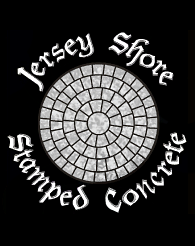If you like the rustic look of boulders and field stone, and are looking for an affordable retaining wall, natural stone walls are an excellent choice.
Boulder walls are a form of the oldest and longest lasting type of retaining walls.
They are actually natural stone walls. Rather than being made of smaller stones, they are typically built of fieldstone boulders. Fieldstone or glacial boulders are very common.
Boulder walls are also the least expensive type of retaining walls. One reason is that fieldstone boulders are a material that is readily available. The cost per square foot for the materials is much lower than the more expensive quarried stone or even manufactured modular blocks.
These types of retaining walls also offer a natural or rustic look. This look fits well in New Jersey and especially for a non-formal or natural looking landscaping. In addition, this type of wall will last the longest. Those boulders have been around for thousands of years and will be here for thousands of years to come. No other retaining wall material will last as long as boulders.
Although working with large boulders is not an easy task, the construction of boulder walls has some advantages over other types of walls. You generally do not need to put a compacted base under a boulder wall, therefore you save the cost of installing the base. Also for each boulder you install you are installing the equivalent of 6 to 10 modular blocks. A boulder wall may take 50% less labor to install than a modular block wall.
The down side is that you cannot move boulders around by hand unless you are using very small boulders. It requires heavy equipment to install a boulder wall. A skid steer loader or an excavator with a clamshell attachment are the typical types of equipment used to install boulder walls. It is also kind of an “art” to building a boulder wall. Because boulders are irregular in shape, the operator must select boulders and carefully fit them together to get a tight fit and make the wall look like it naturally fits together.
A boulder-wall will also be stronger than other types of walls. If you build a four-foot high modular block wall, it will only be 12” – 16” thick. If you build a 4’ high boulder wall using 2’ boulders the wall will be 2’ thick. The mass of the wall determines the walls retaining strength. The thicker the wall, the stronger the wall is. The downside of boulders is that you cannot build a boulder wall as high as you could build a reinforced modular block wall.
Rarely will you see a boulder wall higher than 4 or 5 feet. It can be done with some engineering and reinforcement, but then it becomes much more expensive. In most cases if a wall is needed to restrain a grade of more than 4 feet, they will build multiple walls or tiers with one wall set back but on top of the first wall.

